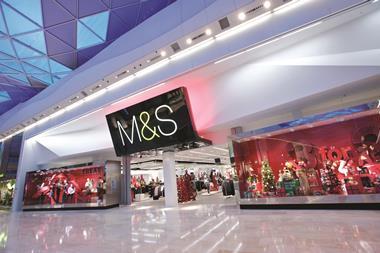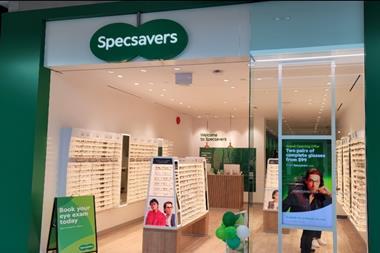Despite impressive online sales growth, helpful autumn weather and rising consumer confidence, is House of Fraser rising with the tide?
Despite impressive online sales growth, helpful autumn weather and rising consumer confidence, is House of Fraser rising with the tide?
At the Labour Party conference yesterday Ed Miliband quipped: “They used to say a rising tide lifts all boats. Now the rising tide just seems to lift the yachts.” Perhaps we can see that trend of upper/middle class prosperity in the buoyant sales being reported by the John Lewis department store business, with electrical gadgets of all sorts flying out of their doors.
But House of Fraser is, like its rival Debenhams, far more of a fashion retailer, without John Lewis’s strong household goods business, and its current trading report today was somewhat subdued, with like-for-like sales “only” up by 1.1% in the last eigh weeks (albeit the comp was quite tough, with like-for-like sales running up by 4.6% at this stage a year ago).
Interestingly, House of Fraser’s chief executive John King says that their higher ABC1 customer demographic is spending well, but the other parts of the market remain challenging, whilst August was a difficult month, with spring/summer stocks in short supply, despite the warm weather.
At least the House of Fraser gross margin is on a rising tide, with first half gross margins up by 60bps thanks to a healthy mix of high-margin house brand sales, and over the last eight weeks reduced discounting has pushed the gross margin up by as much as 100bps.
However, healthy gross profit growth in the first half of the year was not translated into bottom-line profit growth because of rising operating costs, up by 6.4% in quarter-two. The problem here is a surge in distribution costs on the back of the boom in online sales, which rose by 53% in the second quarter (on top of 52% growth in the second quarter a year ago).
The impressive growth in online sales at House of Fraser partly reflects the investment in the website and the branded offer, but a lot of it reflects the investment in offering market-leading order delivery options, for next day pick-up in store or at home.
Online sales, unfortunately, are not cost-free and all the big department stores, including John Lewis, are having to absorb rising multichannel costs at a time when store like-for-like sales are under pressure. Total “like-for-like” sales at House of Fraser rose by 2% in its second quarter, but take out the online sales and that meant that store like-for-like sales were nearly 3.5% down. The Oxford Street flagship store is running over 10% up in sales after its revamp, but an awful lot of House of Fraser’s 59 other stores must be seeing sales fall.
The fact that the good ship House of Fraser is burdened down by its heavy store fixed costs helps to explain why it is still not very profitable and is finding it hard to grow its bottom line, despite all the online sales growth.
And the weak profit performance, when combined with the big debt position on the balance sheet and the pension deficit, helps to explain why the Highland consortium that owns House of Fraser is struggling to find new investors or buyers for the business.
But the House of Fraser management team is doing its best to push the business forward and, with a bit of luck and some decent weather, it may yet prove to be “well placed” to benefit from a further pre-election economic recovery. At least it is firmly on top of the online sales tide, which is more than can be said of Laura Ashley, which today actually reported a 3.7% fall in online sales in its first half.
About Nick Bubb
Nick Bubb has been a leading retailing analyst for over 30 years. He is a well-known commentator on UK retailing and is a founder member of the influential KPMG/Ipsos “Retail Think-Tank”.


























No comments yet